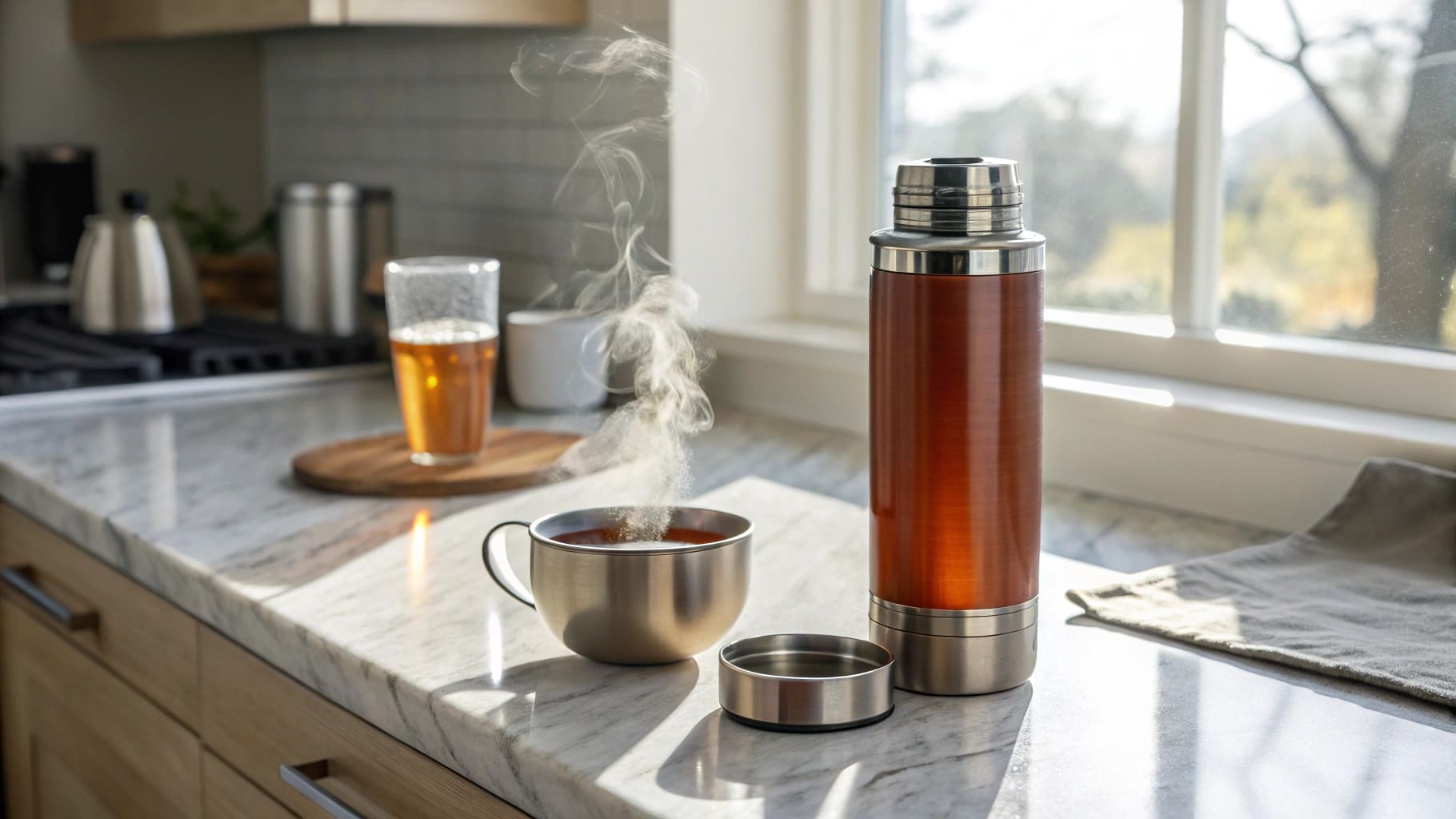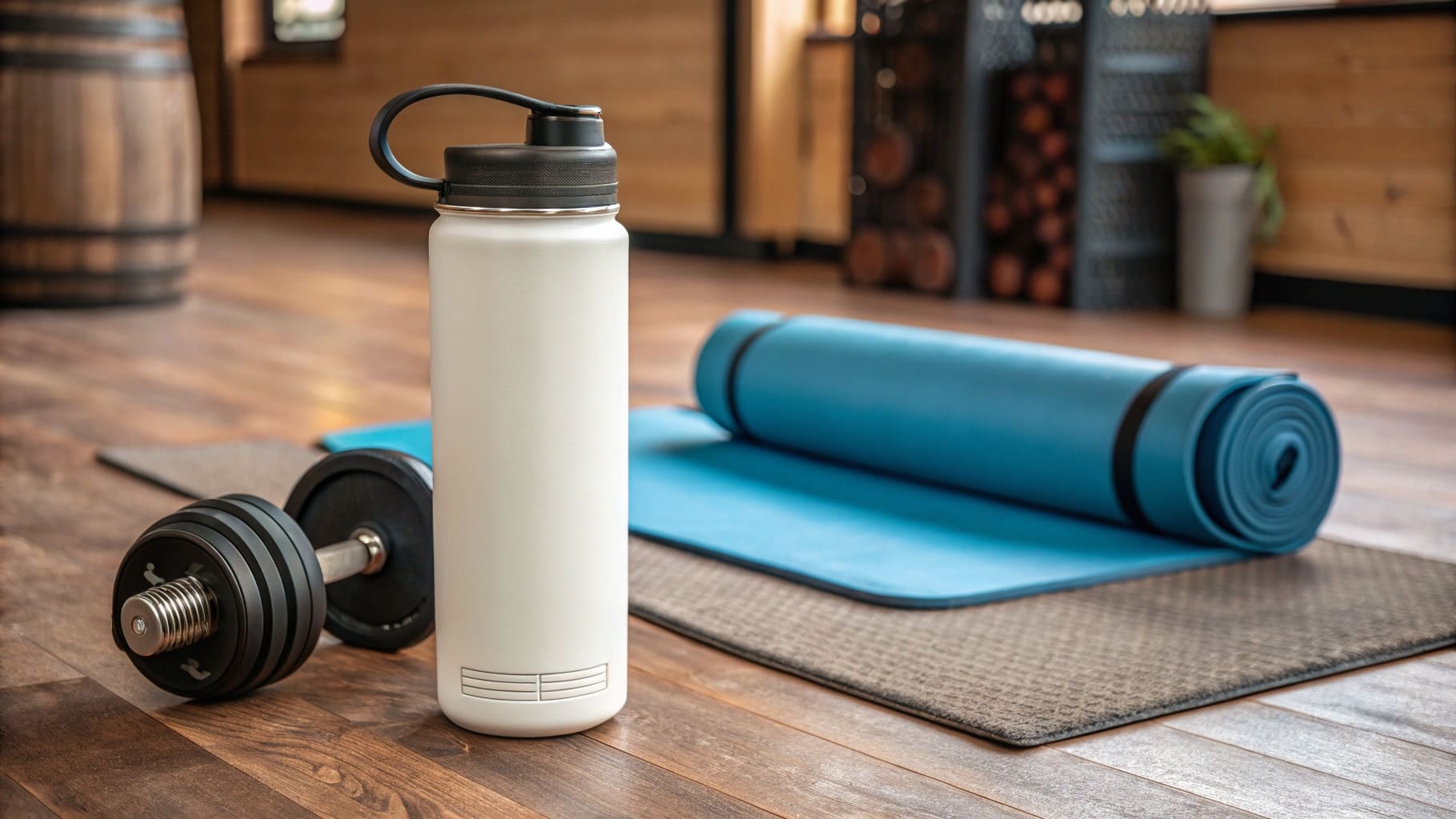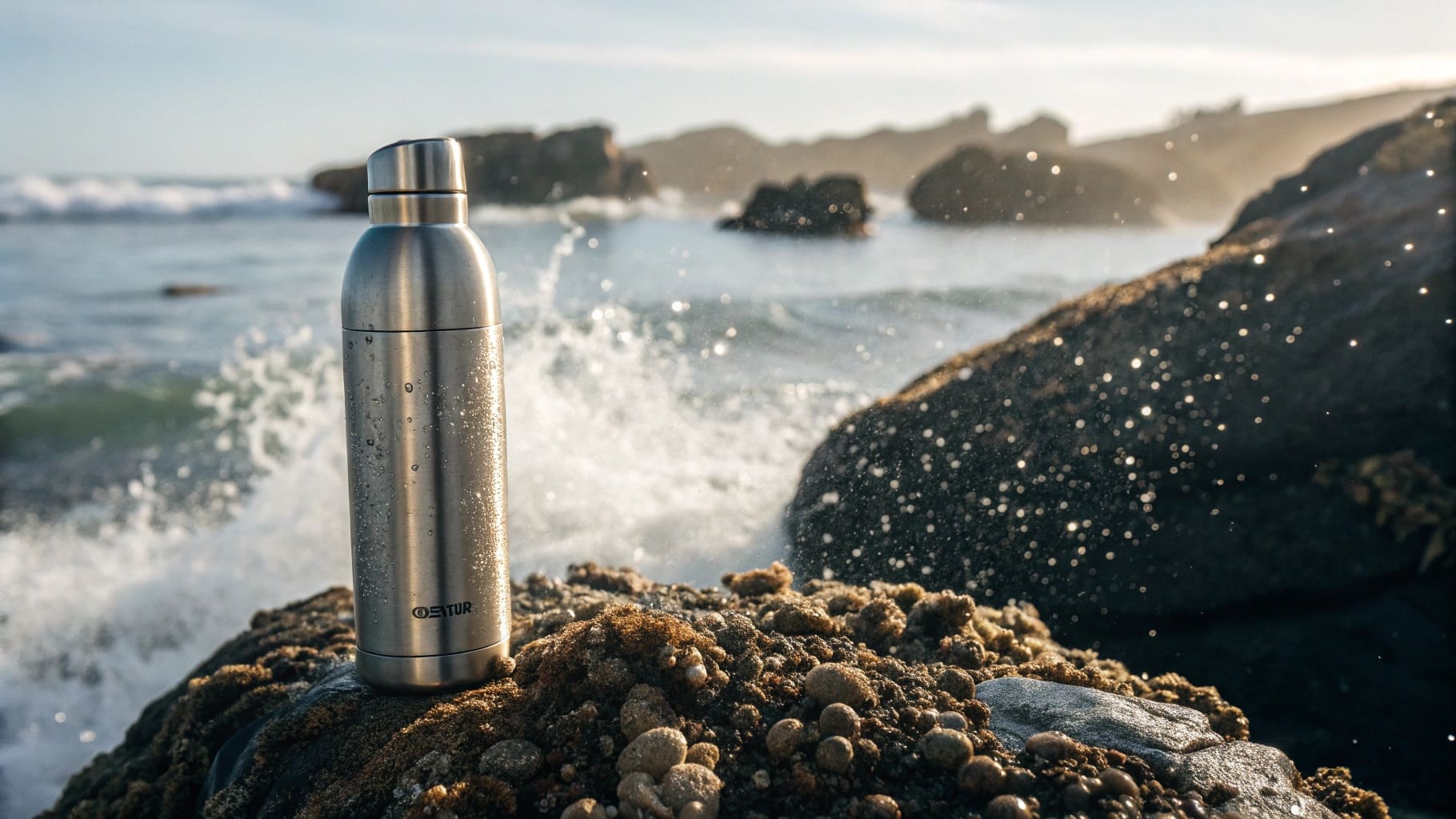Struggling to pick the right stainless steel for your products? It's confusing, and mistakes can be costly. This guide makes it simple, ensuring you choose wisely for your business.
This buyer's guide helps by clearly explaining the key differences in composition, performance, and cost between 304 and 201 stainless steel. This knowledge empowers you to make informed purchasing decisions.

Choosing the right materials is so important for your brand's reputation and your customers' satisfaction. I've seen businesses make costly mistakes by not understanding these basic differences. You want to avoid unhappy customers and ensure the quality you promise. Let's dive into how you can tell these materials apart, and why it matters so much for products like stainless steel water bottles. This will help you ask the right questions and get exactly what your business needs.
How can you tell the difference between SS 201 and SS 304?
Worried about accidentally buying lower-grade 201 steel instead of 304? This uncertainty can impact product quality. We'll show you clear ways to distinguish them.
The easiest way to tell SS 201 from SS 304 is by checking supplier certifications and Material Test Reports (MTRs). Though they look similar, 304 offers superior corrosion resistance1, crucial for quality.

Understanding the nitty-gritty between 201 and 304 stainless steel is vital, especially for someone like Mark Shenng, who values quality but also seeks competitive pricing. When I first started in this business, I almost made a big mistake by opting for a cheaper steel without fully understanding the implications. Luckily, a mentor pointed out the risks.
The primary difference lies in their chemical composition2.
- SS 304 (Food Grade): Contains approximately 18% chromium and 8% nickel. This composition gives it excellent corrosion resistance, making it ideal for food and beverage containers like the hip flasks and water bottles we produce at Icobottle. It's the industry standard for good reason.
- SS 201: Contains a lower amount of nickel (replaced by manganese and nitrogen) and typically around 16-18% chromium. While this makes it cheaper, it also significantly reduces its resistance to rust and corrosion, especially from acidic substances or in humid environments.
For B2B buyers like procurement officers or startup bosses, this difference is critical. Using 201 steel for a product that comes into contact with liquids can lead to premature rusting. This doesn't just affect the product's lifespan; it can also affect its safety and your brand's reputation. Imagine a customer receiving a water bottle that starts showing rust spots – that's a quick way to lose trust.
Here's a simple comparison:
| Feature | SS 201 | SS 304 (Food Grade) |
|---|---|---|
| Corrosion Resistance | Lower; prone to rust | Excellent |
| Nickel Content | Lower (approx. 3.5-5.5%) | Higher (approx. 8-10.5%) |
| Manganese Content | Higher (approx. 5.5-7.5%) | Lower (approx. 2% max) |
| Cost | Lower | Higher |
| Durability | Less durable against corrosive elements | More durable |
| Common Use | Industrial, structural (dry environments) | Food equipment, water bottles, cutlery |
While visual identification is nearly impossible, demanding an MTR from your supplier is a reliable way to verify the grade. Some simple chemical spot tests can also differentiate, but these are usually done in a lab. As a buyer, your best bet is to partner with reputable suppliers like us at Icobottle, who guarantee the material specifications. We understand that for customers in America and Europe, quality and safety are non-negotiable.
How do you tell the difference between 304 and 316 stainless steel?
Choosing between 304 and 316 steel seems complex, right? Using the wrong one means you either overpay or get less durability. Let's clarify this for you.
316 stainless steel offers superior corrosion resistance compared to 304, especially against chlorides and marine environments, due to the addition of molybdenum. It is often chosen for premium or specialized applications.

When you're looking for top-tier quality, the discussion often shifts to 304 versus 316 stainless steel. For buyers like Mark, who are sensitive to quality, understanding this distinction is key, even if it means a slightly higher price point for specific needs. I remember a client who insisted on 316 for a marine application, and it was absolutely the right call.
Both 304 and 316 are austenitic stainless steels, meaning they are non-magnetic and offer good corrosion resistance. However, 316 steel takes this a step further.
- SS 304: As we discussed, this is the workhorse of the stainless steel world, widely used for kitchenware, water bottles, and general applications. Its 18% chromium and 8% nickel content provide robust protection against most common corrosive agents.
- SS 316: This grade also contains a high percentage of chromium and nickel, similar to 304. The key difference is the addition of molybdenum (typically 2-3%). This element significantly enhances its resistance to corrosion, particularly from chlorides and other industrial solvents. This makes it an excellent choice for products exposed to saltwater, de-icing salts, or harsh chemical environments.
For most everyday drinkware, like the coffee mugs and tumblers we customize at Icobottle, 304 stainless steel is perfectly adequate and provides the best balance of performance and cost. However, if a customer has a specific requirement for enhanced corrosion resistance – perhaps for medical applications, marine equipment, or high-end products marketed for extreme durability – then 316 becomes a strong contender.
Here’s a breakdown:
| Feature | SS 304 | SS 316 |
|---|---|---|
| Molybdenum Content | None | Approx. 2-3% |
| Corrosion Resistance | Good, especially against general corrosion | Excellent, especially against chlorides & acids |
| Cost | Moderate | Higher |
| Typical Uses | Food & beverage, general hardware | Marine, medical, chemical, premium applications |
| Weldability | Good | Good |
For procurement officers, the choice depends on the product's end-use and desired market positioning. If your brand targets a premium segment or specific demanding environments, 316 steel can be a valuable differentiator. However, for most B2B wholesale orders of standard stainless steel products, 304 offers the optimal combination of quality, safety, and value. Always discuss your specific needs with your supplier. We, at Icobottle, are happy to guide you based on your product requirements.
How do I identify a 304 stainless steel?
Unsure if your supplier is truly providing 304 stainless steel? This doubt can be stressful, especially when quality is paramount. Here’s how you can be more certain.
The most reliable way to identify 304 stainless steel is by requesting and verifying the Material Test Report (MTR) from your supplier. This document details the exact chemical composition.

Knowing how to identify 304 stainless steel is crucial for any buyer, especially for someone like Mark who prioritizes quality inspection and has faced issues like certificate fraud. You can't just tell by looking at it; 304, 201, and even 316 can appear identical to the naked eye. I've learned over the years that due diligence here is non-negotiable.
Here are practical steps you can take, as a B2B buyer, to ensure you're getting genuine 304 stainless steel:
- Material Test Reports (MTRs) or Mill Test Certificates (MTCs): This is your most important tool. Always demand an MTR from your supplier for each batch of stainless steel products. This certificate, issued by the steel mill, details the precise chemical composition of the steel, including the percentages of chromium and nickel. For 304, you're looking for approximately 18% Cr and 8% Ni. At Icobottle, providing MTRs is a standard part of our quality assurance for our wholesale clients.
- Supplier Reputation and Trust: Work with established and reputable suppliers who have a track record of providing quality materials. A good supplier will be transparent about their materials and happy to provide documentation. My company, Icobottle, built its reputation on this transparency.
- Third-Party Testing: For very large orders or if you have serious doubts, you can consider sending a sample product to an independent lab for X-ray fluorescence (XRF) analysis. This will give you a precise breakdown of the material composition. This might be an extra cost, but for peace of mind and to protect your brand, it can be worth it.
- Ask Specific Questions: Don't just ask "Is this 304 stainless steel?". Ask for specific details.
Here are some key questions to ask your supplier:
| Question Category | Specific Question to Ask Your Supplier | Why It's Important |
|---|---|---|
| Certification | "Can you provide the Material Test Report (MTR) for this batch of 304 SS?" | Verifies chemical composition against 304 standards. |
| Origin of Steel | "Which mill produced the stainless steel coils used for these products?" | Reputable mills have better quality control. |
| Quality Control | "What internal quality checks do you perform to verify steel grade?" | Shows supplier's commitment to quality beyond just paperwork. |
| Traceability | "How do you ensure traceability of the steel from the mill to the final product?" | Ensures the MTR corresponds to the actual product you receive. |
Some might mention a "magnet test," but it's not foolproof. While 304 is generally non-magnetic in its annealed state, it can become slightly magnetic after cold working (like forming it into a bottle). So, relying solely on a magnet can be misleading.
For buyers like Mark, who understand sales but lack deep technical expertise, focusing on documentation and supplier trust is the most effective strategy. Avoiding inefficient communication and ensuring product quality starts with these verification steps.
Conclusion
Understanding steel differences (304, 201, 316) is vital. This guide helps you choose quality, avoid issues, and ensure value for your stainless steel product business.
-
Understanding the corrosion resistance differences can help you choose the right stainless steel for your needs, ensuring product quality and safety. ↩
-
Exploring the chemical composition differences can clarify why one grade is preferred over the other for specific applications, enhancing your understanding of material selection. ↩

